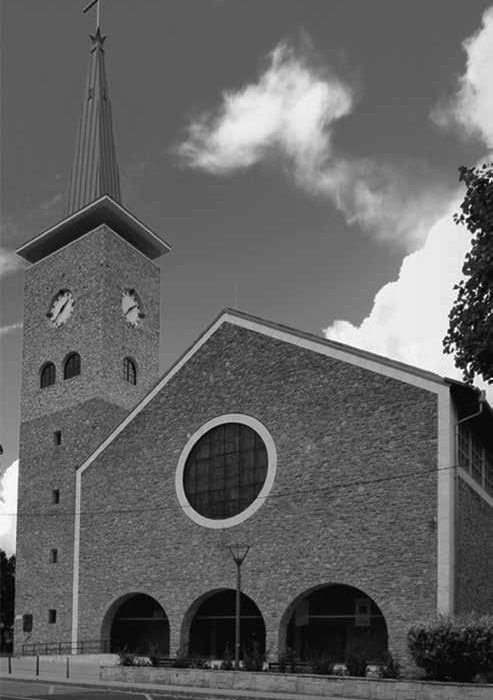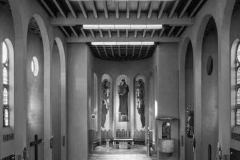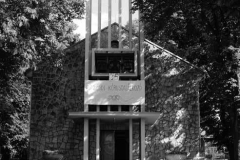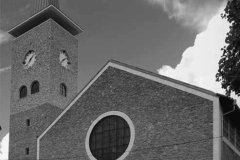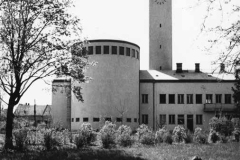Pars Pro Toto
Historical Aspects of Church Architecture in the Inter-War Era
Text: Zoltán Dragon
This study draws conclusions concerning the problems of the whole range of Catholic liturgical spaces built between the two world wars on the basis of some sacral buildings located in Hungary. The churches built between the two world wars are the harbingers of a new era in the history of architecture, art history and technology, built with new layouts, new technical solutions and new building materials, as a response to the ever-changing requirements. Previously, the construction, decoration and enrichment of churches had been a centuries-long process, but the new technologies used between the two world wars have made them much faster to build and also more uniform considering decoration: they are actually the depository of a new Gesamtkunstwerk. Buildings owned or used by the church in the inter-war era were most at risk from historical events, such as the destruction of the Second World War and the Soviet army that crushed the 1956 revolution, and from an ecclesiastical historical point of view, the liturgical reforms that followed the Vatican’s 2nd synod. The buildings survived the decades leading up to the change of the politial system in different states, some were completely rebuilt and others demolished. This study traces the recent building history of some of the rebuilt churches.
